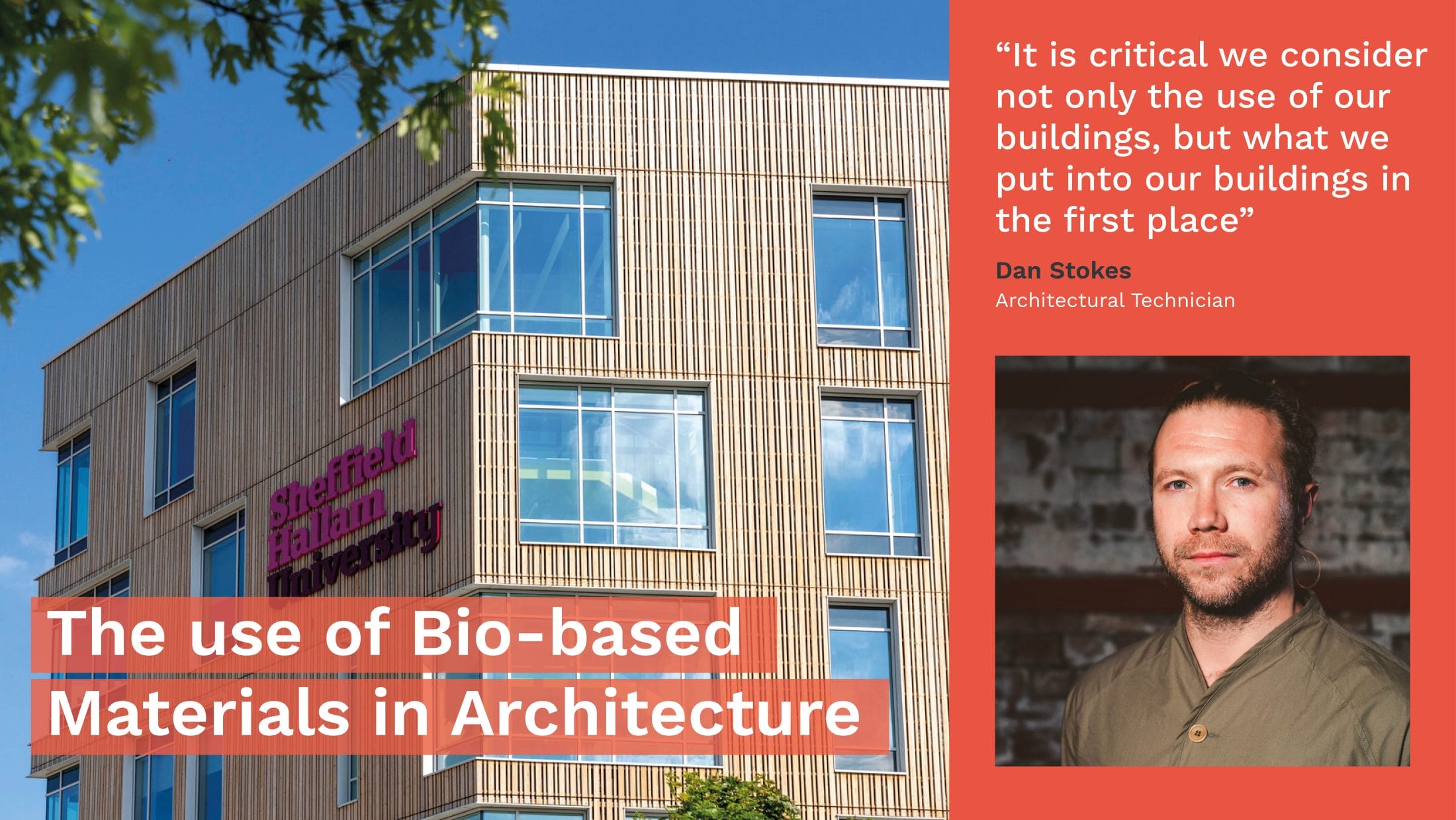
As the construction industry comes to terms with its role in the climate emergency, one thing that is it clear is that we cannot continue we the way things currently are – ‘business as usual’ just isn’t an option.
Principles such as embodied carbon and circular economy for example, are becoming more mainstream in our thinking, and demonstrate that in order to decarbonise the construction industry, it is critical we consider not just how we use our buildings, but what we put into our buildings in the first place.
There is good work being done by a number of organisations within the industry raising awareness and spelling out the science as to what isn’t working, what needs to change and how. Using a great analogy I heard recently, similar to how our dietary preferences are moving away from carbon-intensive meat and dairy foods towards a lower carbon, plant-based vegan diet as a recognition of the effect of what we choose to put in our bodies has on the carbon emissions, carbon-intensive construction materials such as steel and concrete need to be replaced by lower carbon, ‘healthier’ plant-based alternatives. Fundamentally, the construction industry cannot decarbonise without embracing its own vegan diet!
So, what are these ‘vegan’, or bio-based materials, to use a more established industry term? Bio-based materials are simply materials that grow or are a natural part of the biosphere – think timber, straw, hemp, cork, clay, and earth. Bio-based materials typically have lower embodied carbon, with timber around 3 times less than steel and over 5 times less than concrete. These materials also sequester carbon, meaning that as they grow, they absorb carbon and store it, locking it in to the material for lifespan of its use.
And this is where architects, engineers and designers can really make a difference – by innovating and bringing these materials into our buildings. Timber is arguably the key material to be embraced by the construction industry if we are to reduce the carbon impact of our buildings. Its applications go beyond cladding and studwork as business as usual currently has it. Its structural capabilities are extensive, producing increasingly taller high-rise buildings on par with concrete and steel, and is the only current viable structural alternative to them. Engineered timber such as cross-laminated timber (CLT) and Glulam offer significantly increased applications, allowing for full and hybrid timber structures, homogenous superstructures and rapid prefabrication and construction of entire built systems. It can even be used as insulation to upgrade our existing buildings, something which is required for more sustainable use of materials – as currently, 99% of all insulation on the market is fossil fuel generated.
Beyond timber, materials such as cork, hemp, and straw are highly insulative and lightweight, and in much the same way as timber, can be used in a variety of applications. Cork can be used as flooring, rigid insulation, external cladding or even as kitchen countertops. Hemp can used be used as incredibly robust external cladding panels and roofing tiles, utilised for its insulation properties as insulation panels and fibreboard, or the best of both as thermally performing hemp building blocks. Straw’s insulative properties enable it uses as infill insulation, and more recently, within prefabricated external wall systems. A house made from cork block was even nominated for the Stirling Prize in 2019, demonstrating that these materials can create world-class buildings.
But why are bio-based materials still underused? One reason is their unfamiliarity to the construction industry, regulators and insurers who have been used to steel, brick, and concrete for so long. The regulatory landscape still favours tried and tested carbon-intensive materials, making the use of bio-based materials more complex and expensive. This prevents a demand for these materials and in turn disincentivises innovation and use. However, this regulatory landscape is starting to change. The French government has established legislation requiring all new public buildings to be built from at least 50% bio-based materials from 2024. Across Europe and North America, the capabilities of engineered timber are recognised, and we are seeing increasing taller timber skyscrapers being built.
The materials are there, with capabilities to substitute our ‘meat and dairy’ carbon-intensive materials for lower carbon, ‘vegan’ alternatives without substituting performance and enhancing our palettes as designers. By looking to innovate and bring these materials into our practice, architecture can play a key role in the decarbonisation of the construction industry. By being ambitious and looking to lead with our design choices, we can educate our clients and the wider public in the quality and capabilities of bio-based materials, and the central role they have to play in our low-carbon future. So in future, when considering material choices, maybe try going vegan?


